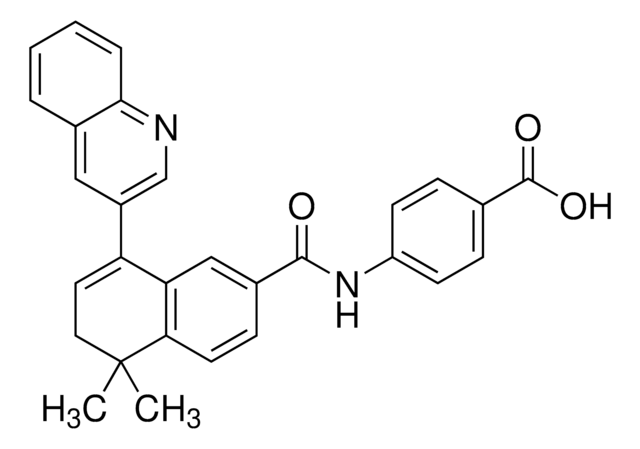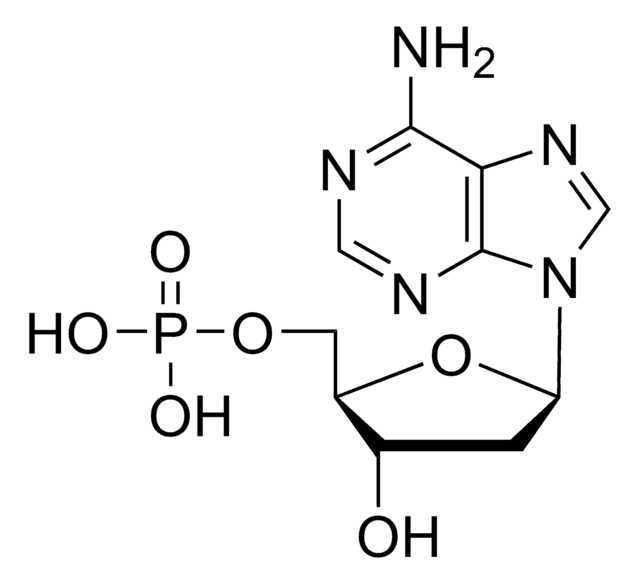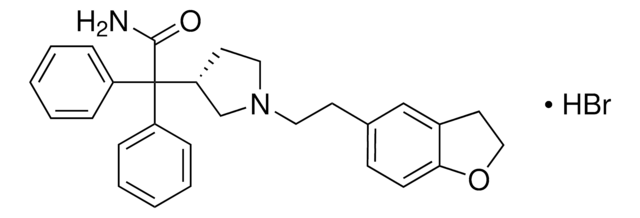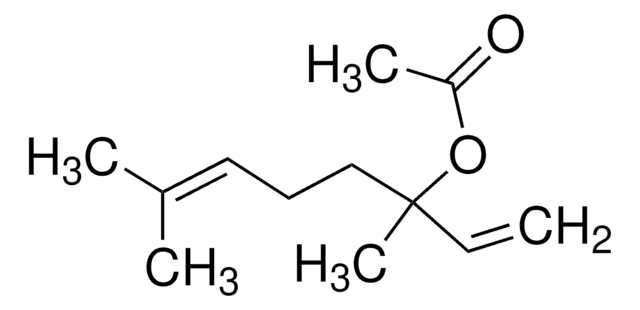Key Documents
SML0255
4-DAMP
≥98% (HPLC)
Synonim(y):
1,1-Dimethyl-4-diphenylacetoxypiperidinium iodide, 4-DAMP methiodide, 4-Diphenylacetoxy-N-methylpiperidine methiodide, 4-[(Diphenylacetyl)oxy]-1,1-dimethyl-piperidinium iodide
About This Item
Polecane produkty
Poziom jakości
Próba
≥98% (HPLC)
Postać
powder
kolor
white to beige
rozpuszczalność
DMSO: ≥15 mg/mL
temp. przechowywania
room temp
ciąg SMILES
[I-].C[N+]1(C)CCC(CC1)OC(=O)C(c2ccccc2)c3ccccc3
InChI
1S/C21H26NO2.HI/c1-22(2)15-13-19(14-16-22)24-21(23)20(17-9-5-3-6-10-17)18-11-7-4-8-12-18;/h3-12,19-20H,13-16H2,1-2H3;1H/q+1;/p-1
Klucz InChI
WWJHRSCUAQPFQO-UHFFFAOYSA-M
Działania biochem./fizjol.
Cechy i korzyści
Kod klasy składowania
11 - Combustible Solids
Klasa zagrożenia wodnego (WGK)
WGK 3
Temperatura zapłonu (°F)
Not applicable
Temperatura zapłonu (°C)
Not applicable
Certyfikaty analizy (CoA)
Poszukaj Certyfikaty analizy (CoA), wpisując numer partii/serii produktów. Numery serii i partii można znaleźć na etykiecie produktu po słowach „seria” lub „partia”.
Masz już ten produkt?
Dokumenty związane z niedawno zakupionymi produktami zostały zamieszczone w Bibliotece dokumentów.
Klienci oglądali również te produkty
Produkty
Muscarinic acetylcholine receptors are G protein-coupled receptors (GPCRs) and mediate acetylcholine actions in the CNS and non-nervous tissues. Learn more about acetylcholine receptors and their role in cell signaling.
Nasz zespół naukowców ma doświadczenie we wszystkich obszarach badań, w tym w naukach przyrodniczych, materiałoznawstwie, syntezie chemicznej, chromatografii, analityce i wielu innych dziedzinach.
Skontaktuj się z zespołem ds. pomocy technicznej









